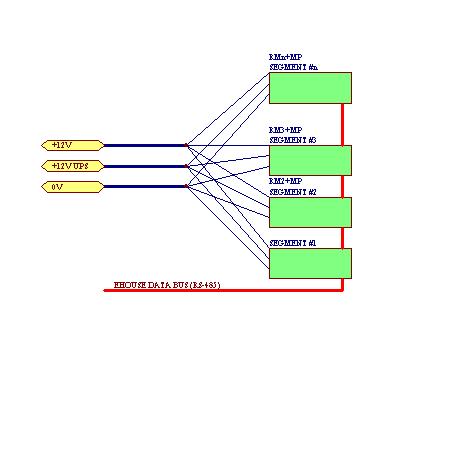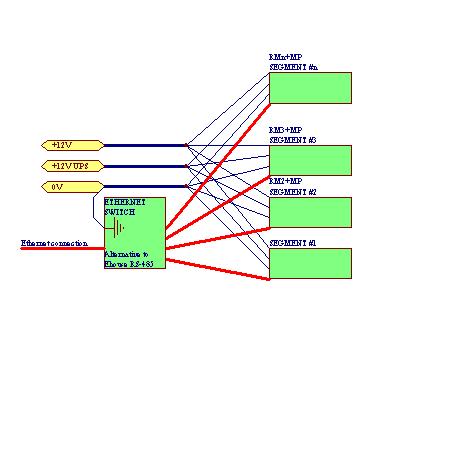eHouse Electronic House – Connecting Decentralized Installation segments
Smart Home , intelligent Building eHouse can be powered from the AC discussed in the post
eHouse electronic House , Smart Home – power the system Connecting to power electronic system for decentralized (distributed) is a seemingly trivial matter, because the current loops , interference and other nuances of transients can disrupt, even those involved in electronics , professional electrics and automation specialists .
Design guidelines for power supply and wiring Home Automation , Building Automation were presented in the previous post.
None point of the low-voltage installation can not be connected to other voltages.
Connecting the power supply and grounds must take place on a star with one junction point for each of the supply voltage.
Do not close signal loop, power and grounds because transients voltage can change the propagation of the signal and begin to apply the law of Murphy (known exactly to all electronic engineers ) .
Please note that the signal cable in low-voltage installations outside electrical circuits connecting two or more points , an excellent antenna capturing mercilessly all the noise in the area.
Use of cables other than those recommended may result in a mismatch of the wave phenomenon occurring in long lines (cables) and even more increase the effect of interference , especially high-speed transmission links and data bus ( eg RS-485 , Ethernet , CAN ) .
RS-485 , CAN , and many other bus must be terminated with terminators at both ends of the bus.
Long lines ( cables ) , which voltage are static , or changes are very slow ( e.g., temperature , Analog , lighting , humidity sensors), should be at the entrance to the measuring system filtered by ceramic capacitors , installed between each input and the ground of the measuring system.
To power the independent segments of Electronic eHouse home in a distributed installation uses lines (OV) and (+12V) and (+12V UPS)
At any other points of contact segments of automation you can not, create a closed loop current, which make life difficult for electronics in transient states.
Finding error in the installation, especially after plastering the house is a miracle.
For a distributed system eHouse 1 employed in RS-485, CAN or scheme is provided below.

Power cords segments should be fairly thick ( for the sake of power controllers and relays min 3 * 2.5mm2 . )
For a serial bus standard is required for UTP-8 twisted pair.
It is also required to make appropriate use of wire pairs ( interlaced ), as RS485 , CAN , Ethernet and many others to transmit signals over long distances are differential. Signals (+) and ( – ) are subtracted from each other, which relates to the interference. In the case of using a braided pair of differential signals, we have a much greater reduction of interference received by wire.
For eHouse system based on Ethernet transmission power scheme is provided below:  Power cords segments should be the same as in the previous case .
Power cords segments should be the same as in the previous case .
Ethernet network to the router, switch , hub , etc.. creates a star,
It is necessary to locate the router near the power supply system eHouse and common connection of the masses (the router and the signal labeled ” 0V ” to minimize the effect of ground loop (as well as ground goes UTP-8 cable parallel to the main body of the power segments).
For more information : Lighting Control , heating devices , lighting controller eHouse Home Automation , Automation